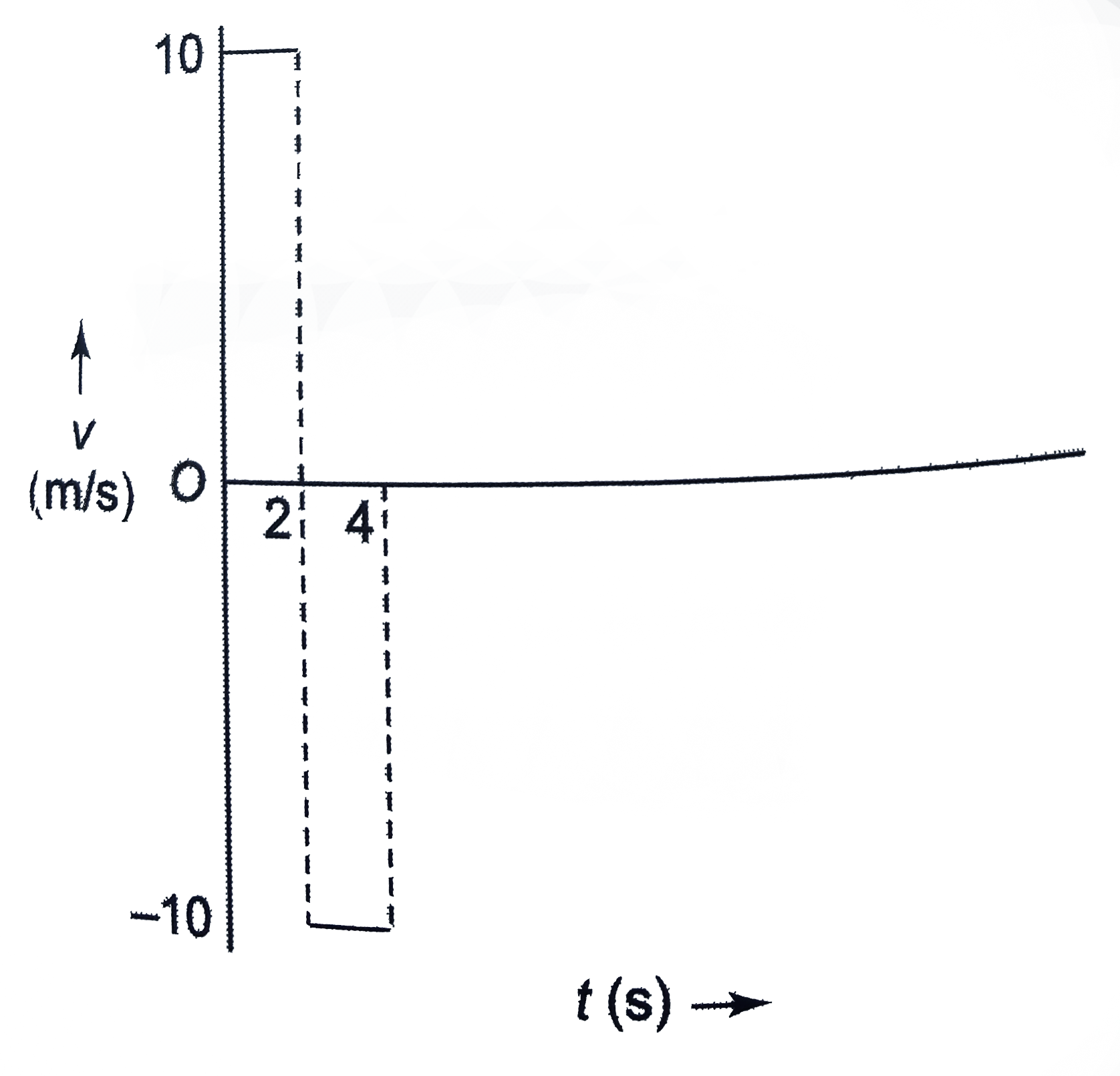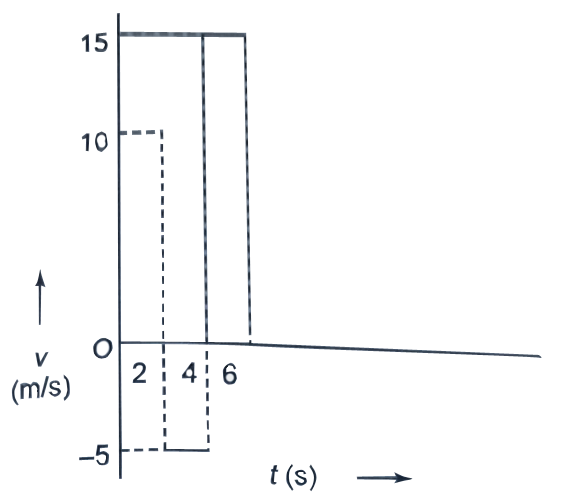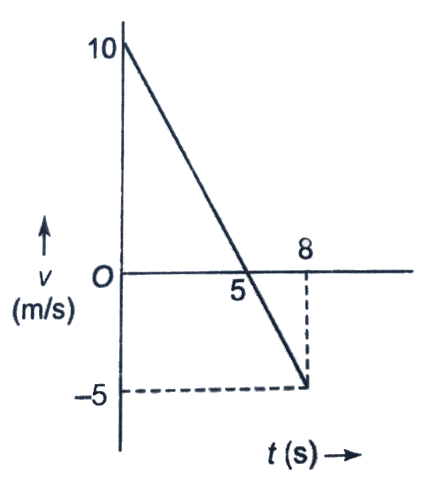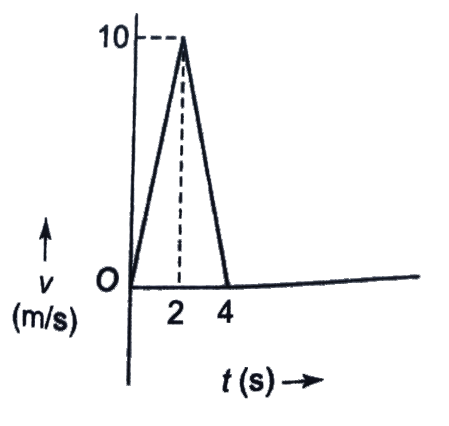Velocity of a moving partical v decreases with its displacement. Given, v=v0−αx where v0= initial velocity ,x = displacement and alpha is a constant. How long will the partical take to reach a point B on the x- axis at a distance xmfrom the origin? Solution in Bengali
Given, v = v0−ax.
At the starting point, v = v0
∴ v0=v0−ax or,x=0[∵α = constant ]
Hence, the particle was initially at the origin.
Now, v=dxdt=v0- ax
or, dxv0−ax=dt or,−αdxv0−αx=−αdt
Then, ∫−αdxv0−αx=−α∫dt or,loge(v0−ax)=−at+c, [ c is the integration constant ]
At t = 0 (initially), x = 0
∴ c=logev0
Therefore , loge(v0−αx)=−αt+logev0
or, t=1αlogev0v0−αx
At the point B , x = xm . Let the corresponding time be tm.
∴ tm=1αlogev0v0−αxm.
Topper's Solved these Questions
- ONE - DIMENSIONAL MOTION BOOK - CHHAYA PUBLICATIONCHAPTER - ONE - DIMENSIONAL MOTION EXERCISE - Section Related Questions
17 Videos
- ONE - DIMENSIONAL MOTION BOOK - CHHAYA PUBLICATIONCHAPTER - ONE - DIMENSIONAL MOTION EXERCISE - HIGHER ORDER THINKING SKILL (HOTS) QUESTIONS
35 Videos
- NEWTONIAN GRAVITATION AND PLANETARY MOTIONBOOK - CHHAYA PUBLICATIONCHAPTER - NEWTONIAN GRAVITATION AND PLANETARY MOTIONEXERCISE - CBSE SCANNER
19 Videos
- QUESTION PAPERS OF NEET -2017BOOK - CHHAYA PUBLICATIONCHAPTER - QUESTION PAPERS OF NEET -2017EXERCISE - QUESTION
32 Videos
Similar Questions
Define rest and motion.
View SolutionCan a partical, moving with a uniform speed have a non-uniform velocity?
View SolutionWhat is the reason for absence of atmosphere in some planets?
View SolutionA molecule of a substance has permanent dipole moment p . A mole of this substance is polarised by applying a storg electrostatic field E . The direction of the field is suddenly changed of 60∘ . If N is the avogadro's number the amount of work done by the field is
View SolutionA particle is moving under constant acceleration a=αt+βt2, where alpha beta constants. If the position and velocity of the partical at start, i.e. t=0 are x0 and v0, find the displacement and velocity as a function of time t.
View SolutionThe velocity of a particle moving along the xaxis is given by v=v_(0)+lambdax , where v_(0) and lambda are constant. Find the velocity in terms of t.
View SolutionA partical is moving along the x-axis and its velocity-time graph is shown in following diagrams. Sketch displacement-time graph.




View SolutionA particle moves with an initial velocity V_(0) and retardation alpha v , where alpha is a constant and v is the velocity at any time t. Velocity of particle at time is :
View SolutionA particle moves with an initial velocity V_(0) and retardation alpha v , where alpha is a constant and v is the velocity at any time t. After how much time, speed of particle decreases by 75%
View SolutionA particle moves with an initial velocity V_(0) and retardation alpha v , where alpha is a constant and v is the velocity at any time t. total distance covered by the particle is
View SolutionA particle moves with an initial velocity v_(0) and retardation alpha v , where v is the velocity at any time t.
View SolutionAt t = 0 a particle is in position x = 0. Now the particle v=alphasqrtx ( alpha Hall constant) began to move along the positive x-axis with velocity. How does the displacement of an object change over time?
View SolutionA partical is moving along the x-axis. The position of the partical at any instant is given by x = a+ bt^(2) where, a = 6 m and b = 3.5 "m.s"^(-2) ,t is measured in second. Find the velocity of the partical at t = 3s .
View SolutionA partical is subjected to an acceleration , where and constants. The position and velocity of the partical at t = 0 are and respectiveIy. What are the expressions for position x and velocity v of the partical at time t.
View SolutionA particle starts moving in a straight line with initial velocity v0 Applied forces cases a retardation of av, where v is magnitude of instantaneous velocity and α is a constant.
How long the particle will take to come to rest.
View Solution
